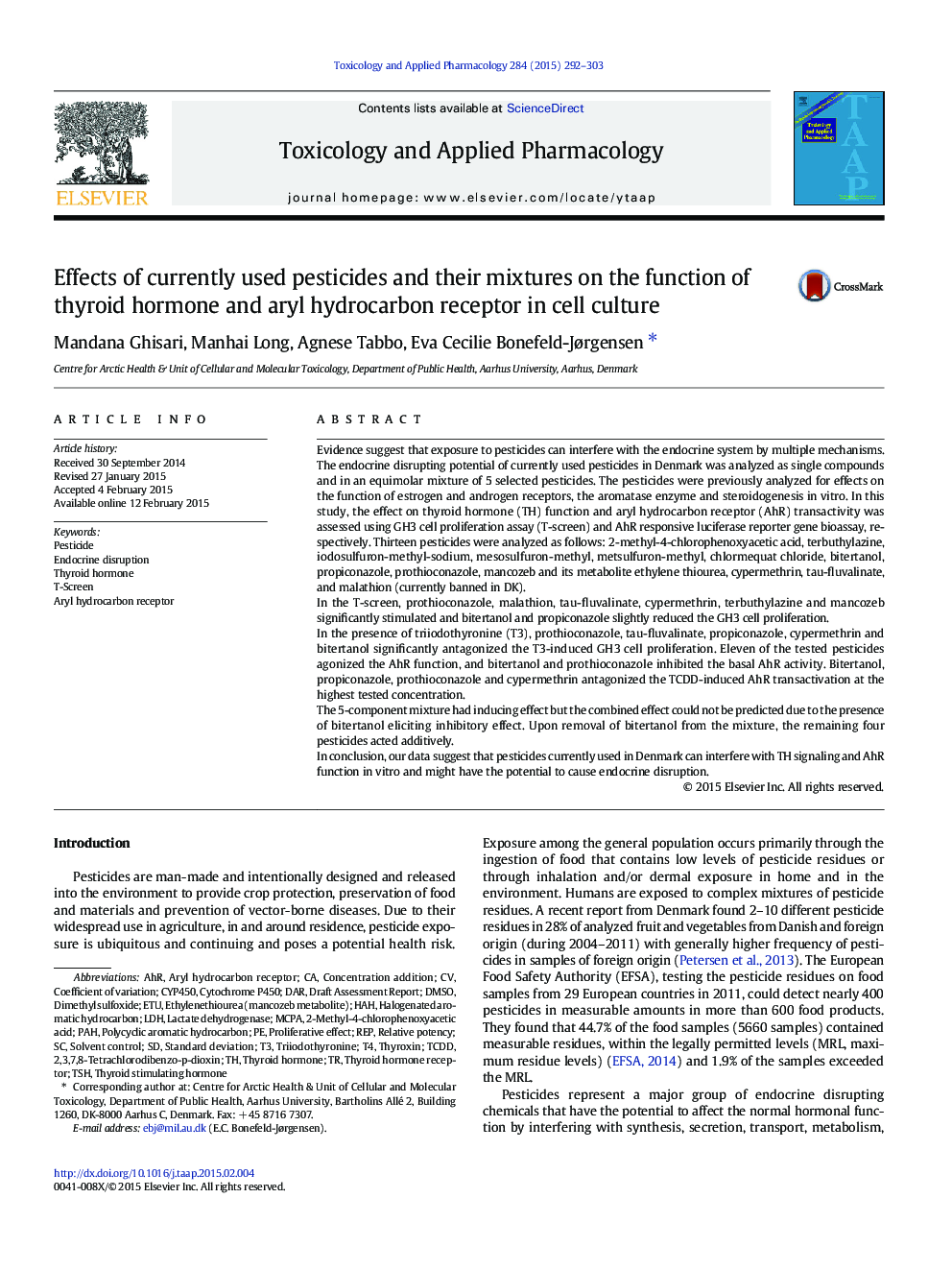| کد مقاله | کد نشریه | سال انتشار | مقاله انگلیسی | نسخه تمام متن |
|---|---|---|---|---|
| 2568410 | 1128445 | 2015 | 12 صفحه PDF | دانلود رایگان |
• Endocrine disrupting (ED) potential of currently used pesticides were evaluated in cell culture.
• Pesticides were analyzed for disruption of TH and aryl hydrocarbon receptor function.
• 6 pesticides increased the GH3 cell proliferation, whereasfour antagonized the T3-induced cell growth.
• 11 pesticides had agonistic effect on AhR and 4 antagonized the TCDD-induced AhR transactivation.
• The five component mixture had inducing effect in both assays.
Evidence suggest that exposure to pesticides can interfere with the endocrine system by multiple mechanisms. The endocrine disrupting potential of currently used pesticides in Denmark was analyzed as single compounds and in an equimolar mixture of 5 selected pesticides. The pesticides were previously analyzed for effects on the function of estrogen and androgen receptors, the aromatase enzyme and steroidogenesis in vitro. In this study, the effect on thyroid hormone (TH) function and aryl hydrocarbon receptor (AhR) transactivity was assessed using GH3 cell proliferation assay (T-screen) and AhR responsive luciferase reporter gene bioassay, respectively. Thirteen pesticides were analyzed as follows: 2-methyl-4-chlorophenoxyacetic acid, terbuthylazine, iodosulfuron-methyl-sodium, mesosulfuron-methyl, metsulfuron-methyl, chlormequat chloride, bitertanol, propiconazole, prothioconazole, mancozeb and its metabolite ethylene thiourea, cypermethrin, tau-fluvalinate, and malathion (currently banned in DK).In the T-screen, prothioconazole, malathion, tau-fluvalinate, cypermethrin, terbuthylazine and mancozeb significantly stimulated and bitertanol and propiconazole slightly reduced the GH3 cell proliferation.In the presence of triiodothyronine (T3), prothioconazole, tau-fluvalinate, propiconazole, cypermethrin and bitertanol significantly antagonized the T3-induced GH3 cell proliferation. Eleven of the tested pesticides agonized the AhR function, and bitertanol and prothioconazole inhibited the basal AhR activity. Bitertanol, propiconazole, prothioconazole and cypermethrin antagonized the TCDD-induced AhR transactivation at the highest tested concentration.The 5-component mixture had inducing effect but the combined effect could not be predicted due to the presence of bitertanol eliciting inhibitory effect. Upon removal of bitertanol from the mixture, the remaining four pesticides acted additively.In conclusion, our data suggest that pesticides currently used in Denmark can interfere with TH signaling and AhR function in vitro and might have the potential to cause endocrine disruption.
Journal: Toxicology and Applied Pharmacology - Volume 284, Issue 3, 1 May 2015, Pages 292–303
